People
Betty Woodman, Visionary Sculptor of Ceramic Vessels, Has Died at 87
"She stayed so vital, always experimenting," says her dealer, Jeanne Greenberg Rohatyn.
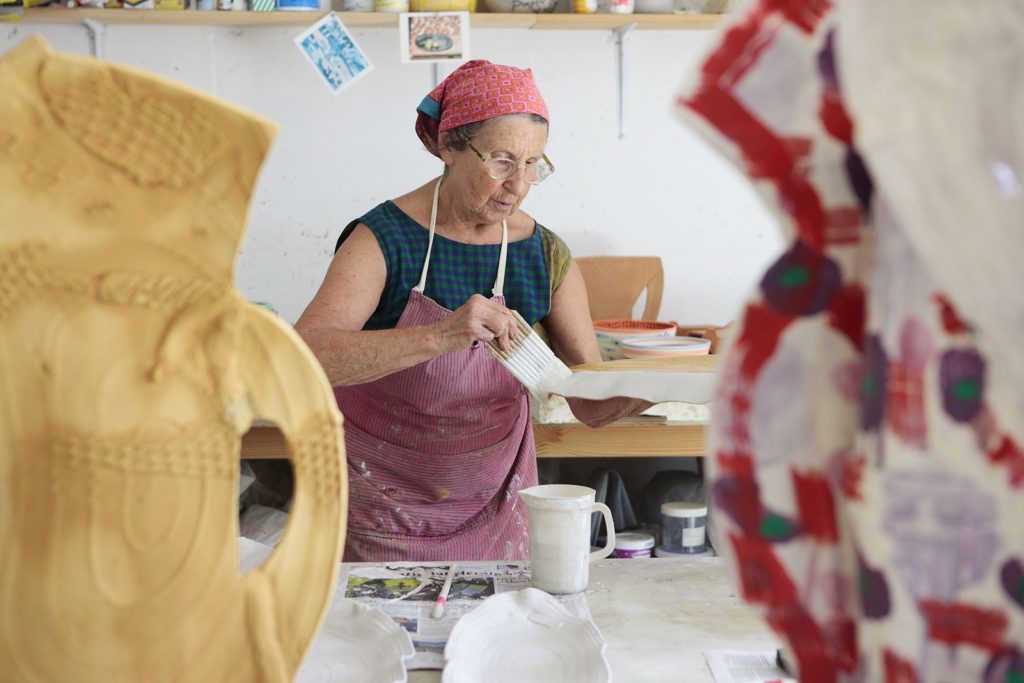
"She stayed so vital, always experimenting," says her dealer, Jeanne Greenberg Rohatyn.

Brian Boucher

The artist Betty Woodman, known for her spirited and blazingly colorful ceramic sculptures, died of pneumonia on Tuesday in New York City, according to her New York dealer, Jeanne Greenberg Rohatyn of Salon 94. She was 87.
“She had a way of elevating the vase, the simplest of domestic objects,” said Greenberg Rohatyn, who knew Woodman since the 1970s, when the artist began to show with Greenberg Rohatyn’s father’s gallery in St. Louis. “Her play with the vessel pushed it out of domestic display to the much more elevated space of art or ritual. That’s what excited me and drew me to the work.”
In a rapturous review of her 2006 survey at New York’s Metropolitan Museum of Art—the first time the institution held a show for a living woman artist—New Yorker art critic Peter Schjeldahl called Woodman “beyond original, all the way to sui generis.”
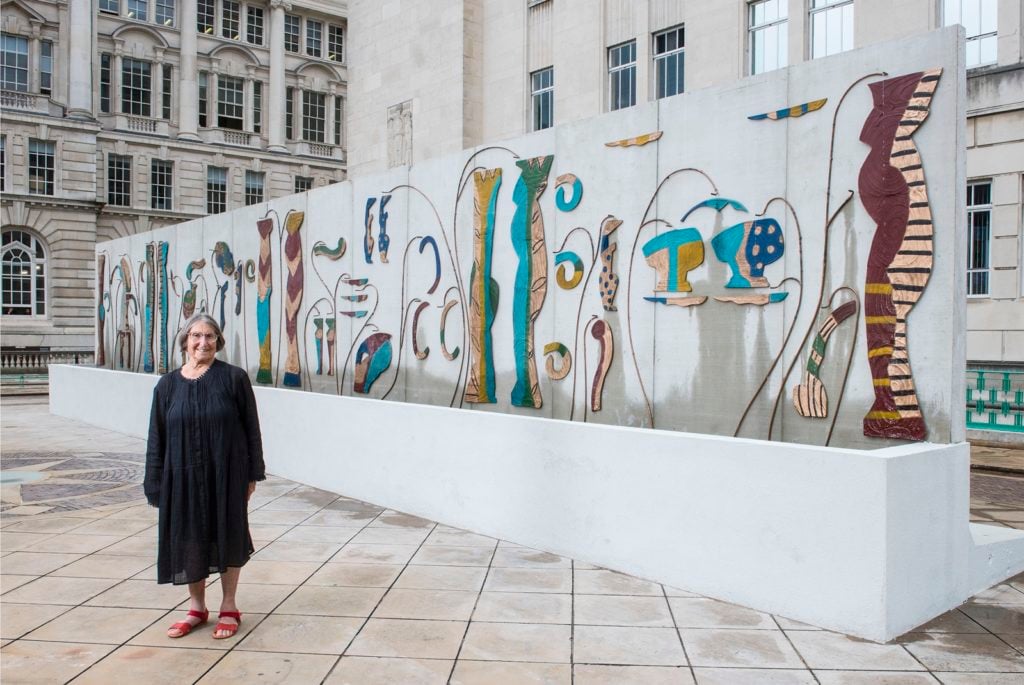
Betty Woodman with her work Liverpool Fountain (2016), at George’s Dock, Liverpool, England. Photo: Joel Chester Fildes, Liverpool Biennial, 2016.
Woodman had been working with her chosen medium since her high school years, in the 1940s, though her exposure to feminist art in the late 1960s honed her focus on humble materials and the domestic sphere. It was a time when “the world of ceramics, where it intersected with ‘high art,’ was totally dominated by the macho,” she told Frieze in 2016. Her lifelong commitment was to the vessel: “in a sense, that’s the subject matter of my work. But I am interested in taking it someplace else.”
In the same interview, she distinguished herself from artists who make “depressing” topical work. “I’m trying to make you feel more, and to make something that I get pleasure out of seeing,” she said.
Pierre Bonnard and Henri Matisse were among the inspirations for her explorations of color and design in a domestic space. “She did not want you to see the struggle in her work,” said Greenberg Rohatyn. “She wanted you to look at her work and think it was a graceful process. That was her attraction to Matisse, the ease she wanted to portray.”
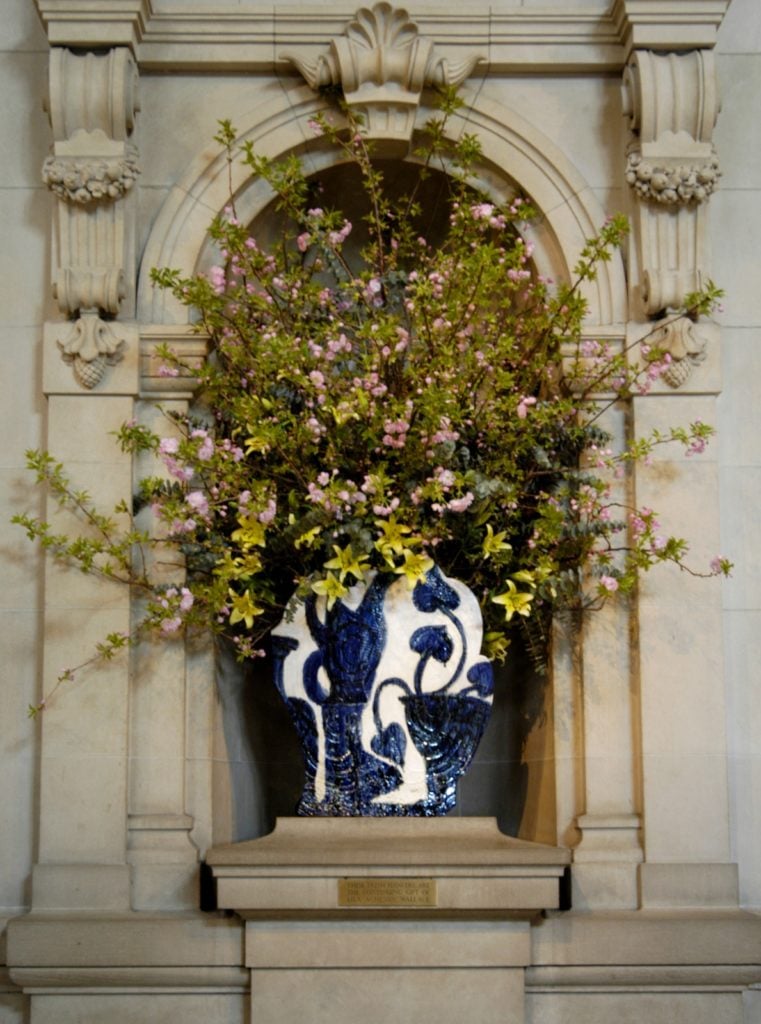
Betty Woodman’s work on view at the Metropolitan Museum of Art, New York. Photo courtesy Salon 94.
Woodman studied at Alfred University in New York. She met her husband, artist George Woodman, while teaching ceramics in Boston. The pair moved to Boulder, Colorado, and then, in 1980, to New York, where she began to show with Max Protetch gallery, which was known for its cross-pollination of art, architecture, and design. Their daughter was the photographer Francesca Woodman, who died of suicide in 1981. George Woodman died in 2017.
Woodman’s work is in the permanent collections of the Metropolitan Museum, the Los Angeles County Museum of Art, the Stedelijk Museum, and the Victoria & Albert Museum. She was also included in numerous international exhibitions, including the Liverpool Biennial (2016); “Postmodernism: Style and Subversion, 1970–1990” at the Victoria & Albert Museum (2011); and “Color and Fire: Defining Moments in Studio Ceramics, 1950—2000” at LACMA.
Though Salon 94 continued showing Woodman late in her life, “It wasn’t as though we were showing her as a historic ceramicist at all,” Greenberg Rohatyn said, “but rather as a present, avant-garde artist of today. She stayed so vital, always experimenting.”
See more of Woodman’s work below.
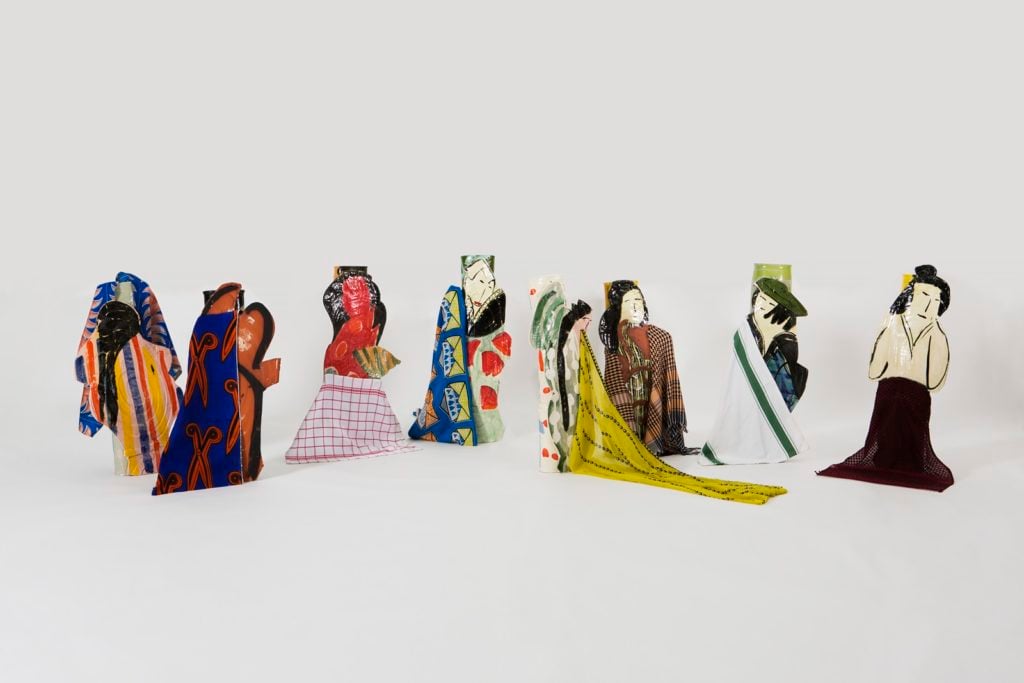
Betty Woodman’s Ladies Engaged in Unnecessary Activities (2017). Courtesy Salon 94.
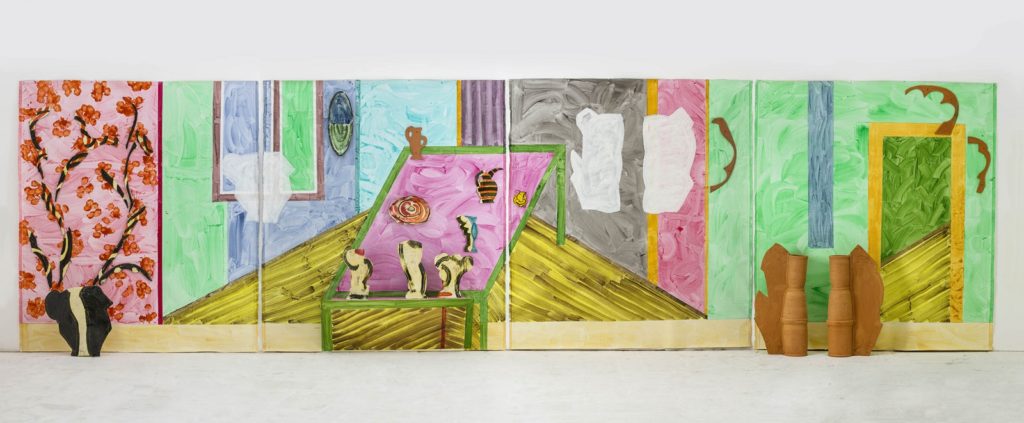
Betty Woodman’s The Summer House (2015). Courtesy Salon 94.
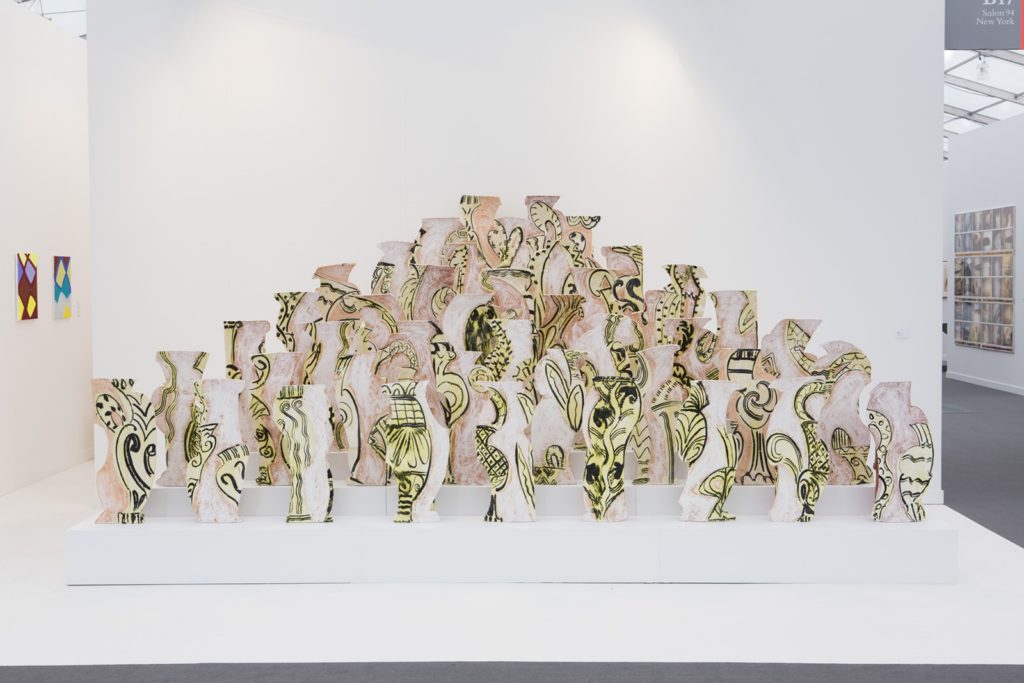
Betty Woodman’s The Aeolian Pyramid (2001). Courtesy Salon 94.
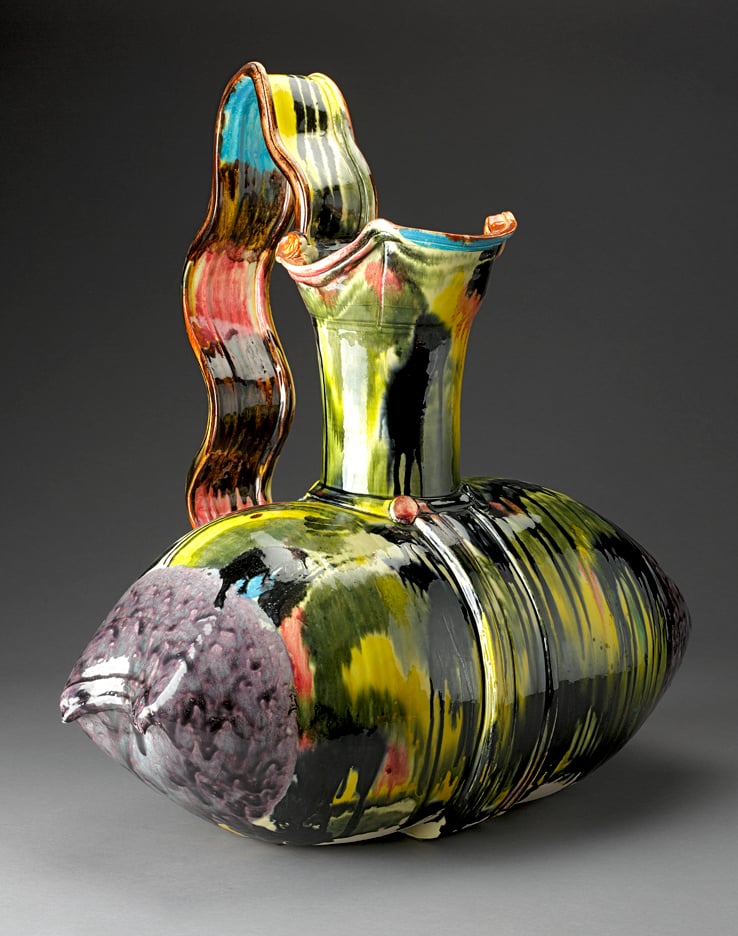
Betty Woodman’s Silk Pillow Pitcher (1985). Courtesy Salon 94.
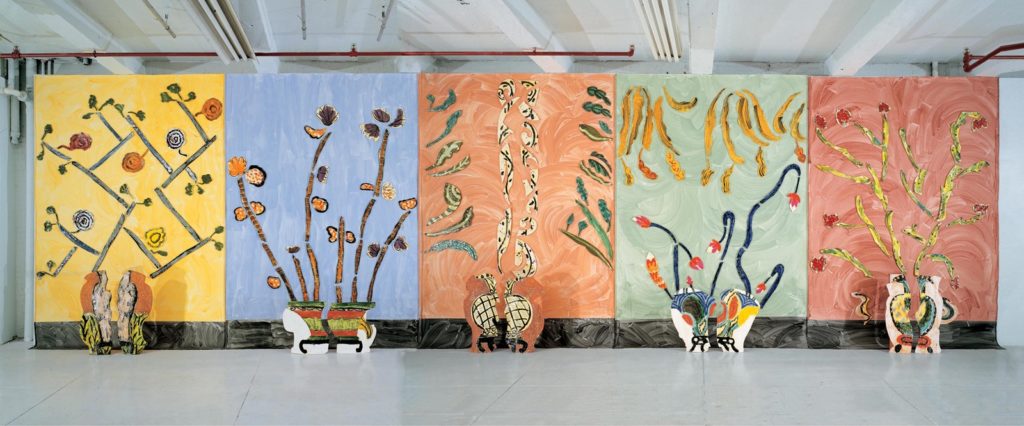
Betty Woodman’s Ceramic Pictures of Korean Paintings (2001/2002). Courtesy Salon 94.